Article begins
Gas stations are not here to stay. As automobility turns electric, we will no longer need them. Their tempo is all wrong; the zippiness of pumping gas far quicker than the unhurried rhythm of the electric vehicle charging station. You know it. Pulling in, filling up the tank, nip into the shop, pay, pee, buy a chocolate bar, coffee, and then out on the road again. Electric cars just don’t work this way. But if they are slower to fill, they can do that filling anywhere they park: at a shopping mall, on a street side, in a parking garage, wherever.
There is a tendency to forget how still cars are. The average privately owned motor vehicle is parked for 23 hours of its day (or 96 percent of the time). And yet, we think of them as things in motion and their infrastructures as designed to enable this movement. Streets, highways, freeways, ferries, bridges, and gas stations appear as their “natural” home, but it is the parked stillness of cars that gives shape to the future of their filling, innovatively (in hubs for example) or by simply installing a public charging point wherever a car might come to rest. There will be no need for the speed the gas station promises, its cadence, smells, and brightly colored pumps are already growing into obsolescence.
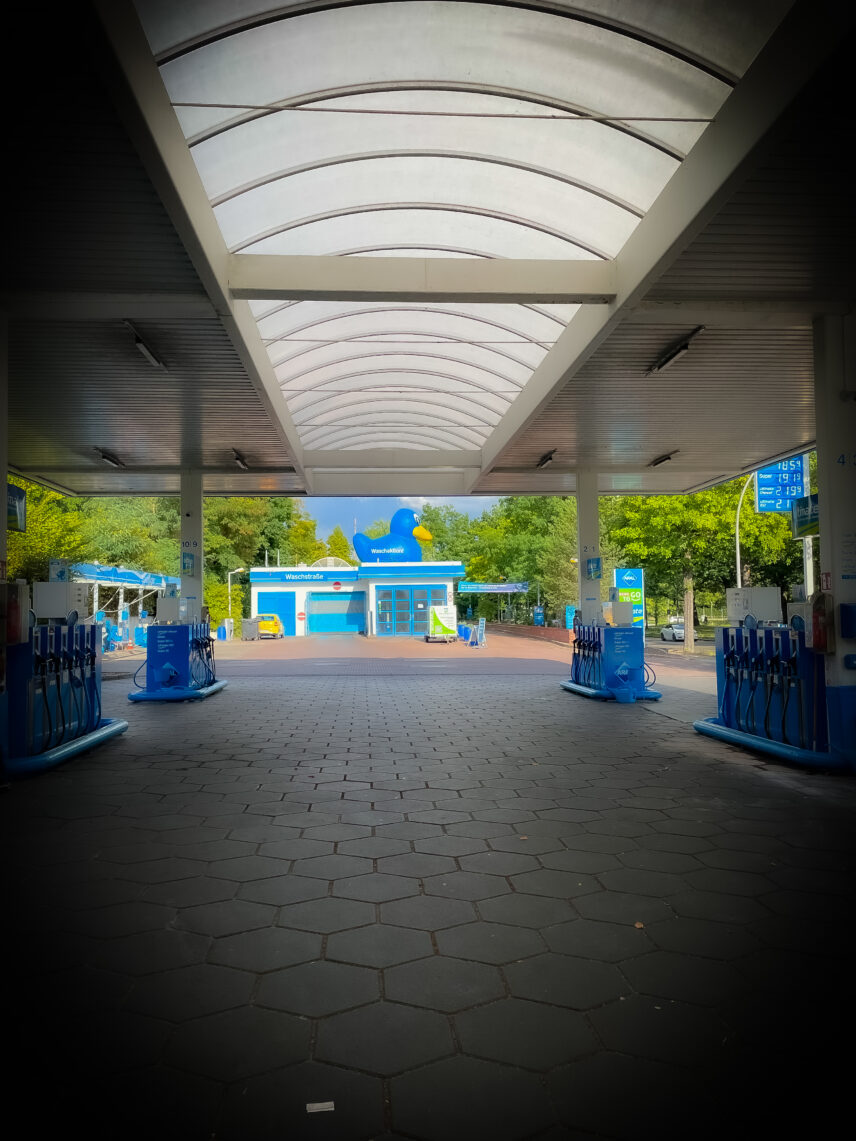
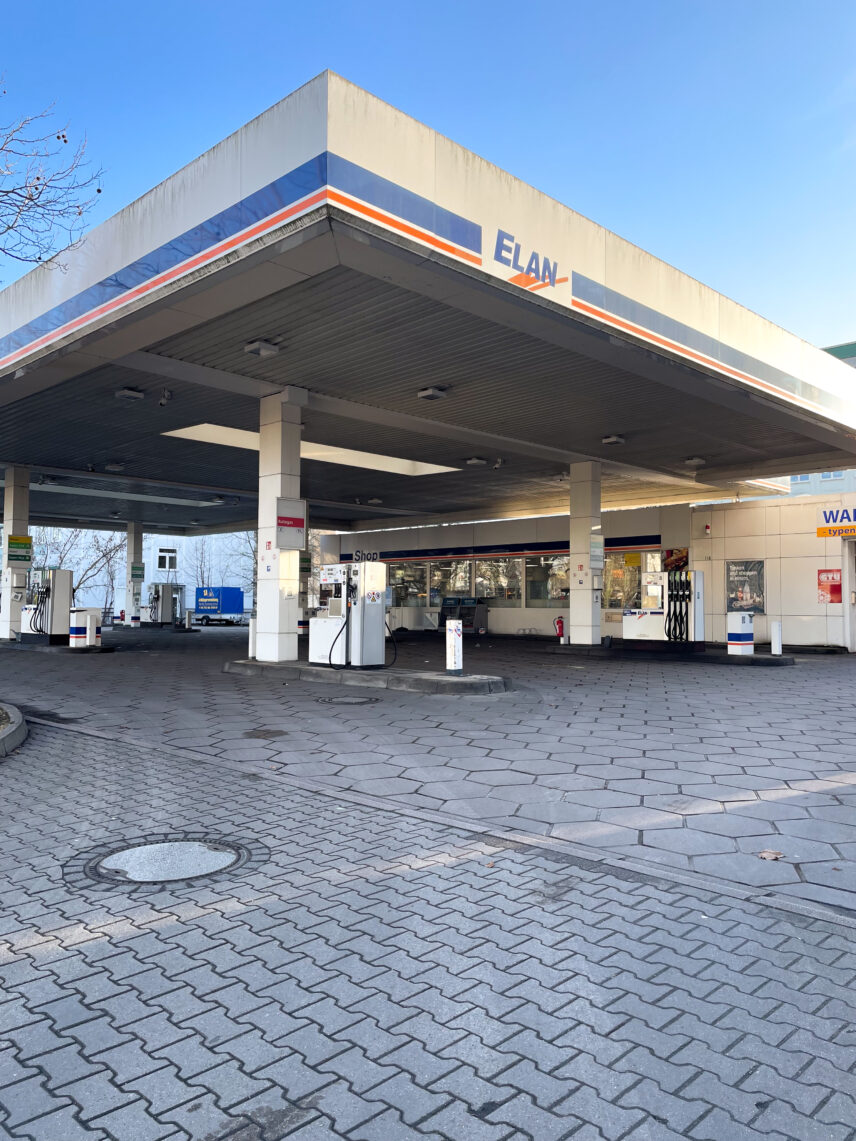
Last term, I asked my students if they ever go to gas stations to put gas in a car. They do not own cars. One tentatively raised her hand, yes. Everyone turned their heads her way, their eyes on her, the one among many. But don’t you go to the shop sometimes? I asked. Their eyes on me, heads shaking, no. This is Germany. They take trains, ride bikes, Uber, car share. But shops close on Sundays in Germany (and in much of Europe). One cannot buy food unless one stops in at the gas station’s Qwikimart. Milk, frozen pizza, soup in a cup, giant yeasted pretzels, mass-produced sausages in paper sleeves. On Sunday, gas station markets are open. The law has been bent to house them. They live in a parallel world. Even so, because young people do not use them, they’re already passé. Dying, even though ubiquitous. It is difficult to fathom a world in which they no longer exist. This demise is upon us and yet we cannot see it.
This photo essay is a way to say goodbye, a first exercise in petronostalgia, a moment of pause to see a most mundane of worlds passing out of being. I take pictures of them now so that later we might remember how they were. I will take pictures of these same gas stations later as well, revisiting them every decade to see what they become—coffee shops, empty lots, storage bunkers, ruins, apartment buildings. Some torn down, some repurposed, some memorialized, some allowed to molder and decay. They are toxic, literally. Work must be done and money spent to unbuild them properly, dig up their tanks, replace their concrete and dirt. And so it is that many will likely remain, poisoned testaments of our fossil-fueled era.
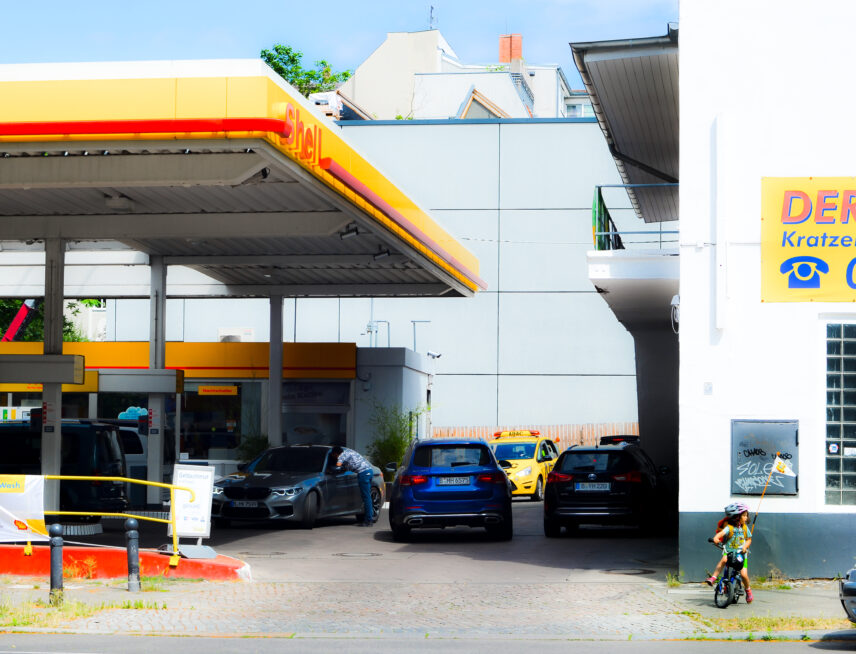
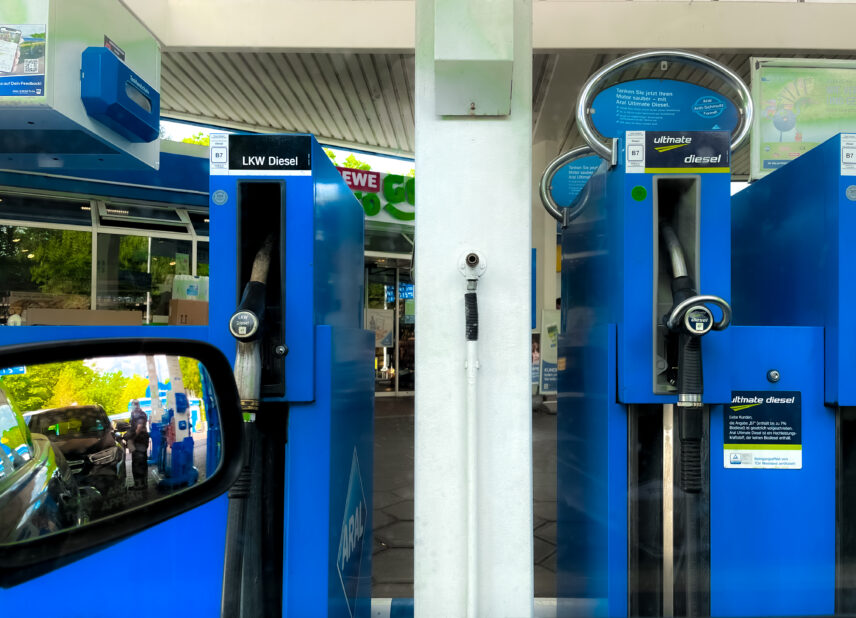
Most the images were taken in West Berlin, but “the West” as a concept created this gaseous oil-driven world, so they are equally some gas stations “in the place we call the West” (with kudos to Marshall Sahlins). These images were snapped in the heart of the shiniest bits of petromodernity, condensed in this theoretical geography, images repeated over and over, stamped into every landscape, signage, app, and map all pointing the way to this fuel. Beyond Berlin, I take pictures of other western gas stations: west Texas, western Oregon, Florida (the whole state is a marvel!), even the west side of Toronto (just to keep the joke alive).
It is difficult to take an aesthetically pleasing picture of a gas station. They are a mess. No clean lines. In Berlin at least, they all have a tree right in front. And they are hard to get at safely while cars come and go. In the German context, one cannot include people in the images without their permission. Thus the gas stations in these images appear untouched by the dynamism of the humans who move through them.
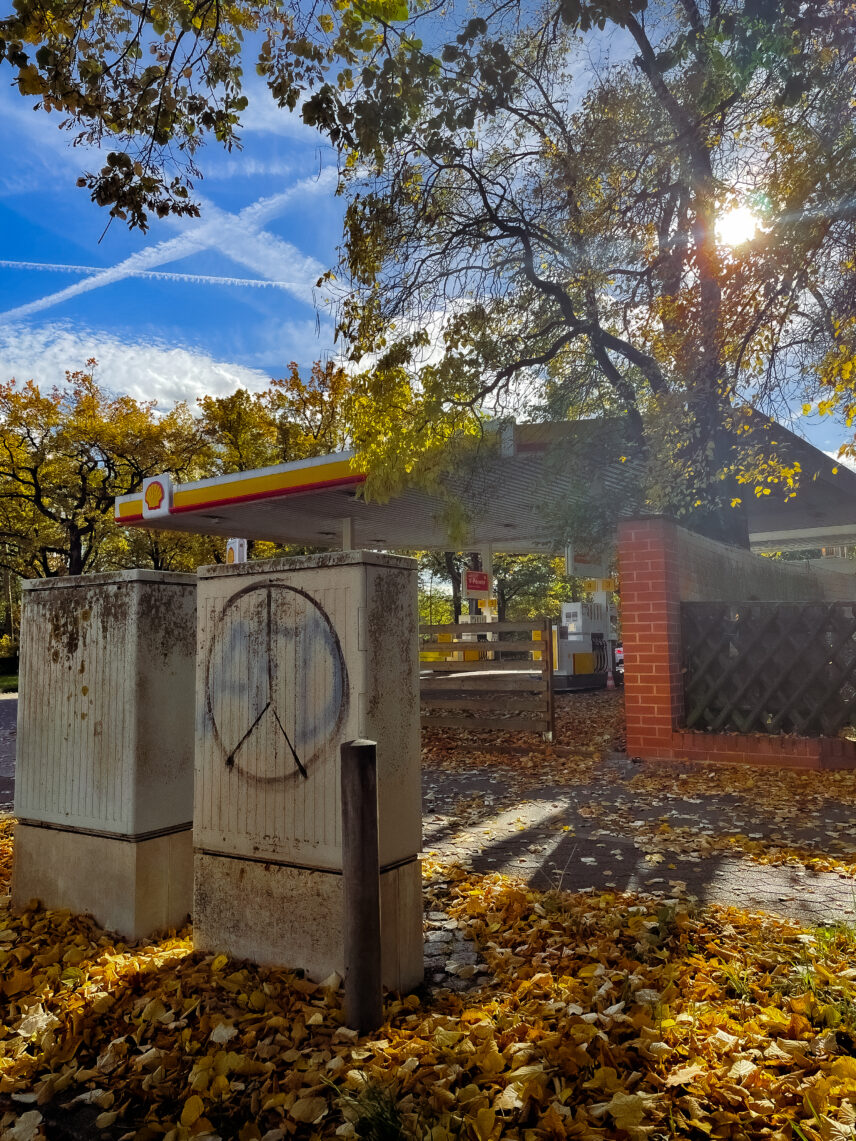
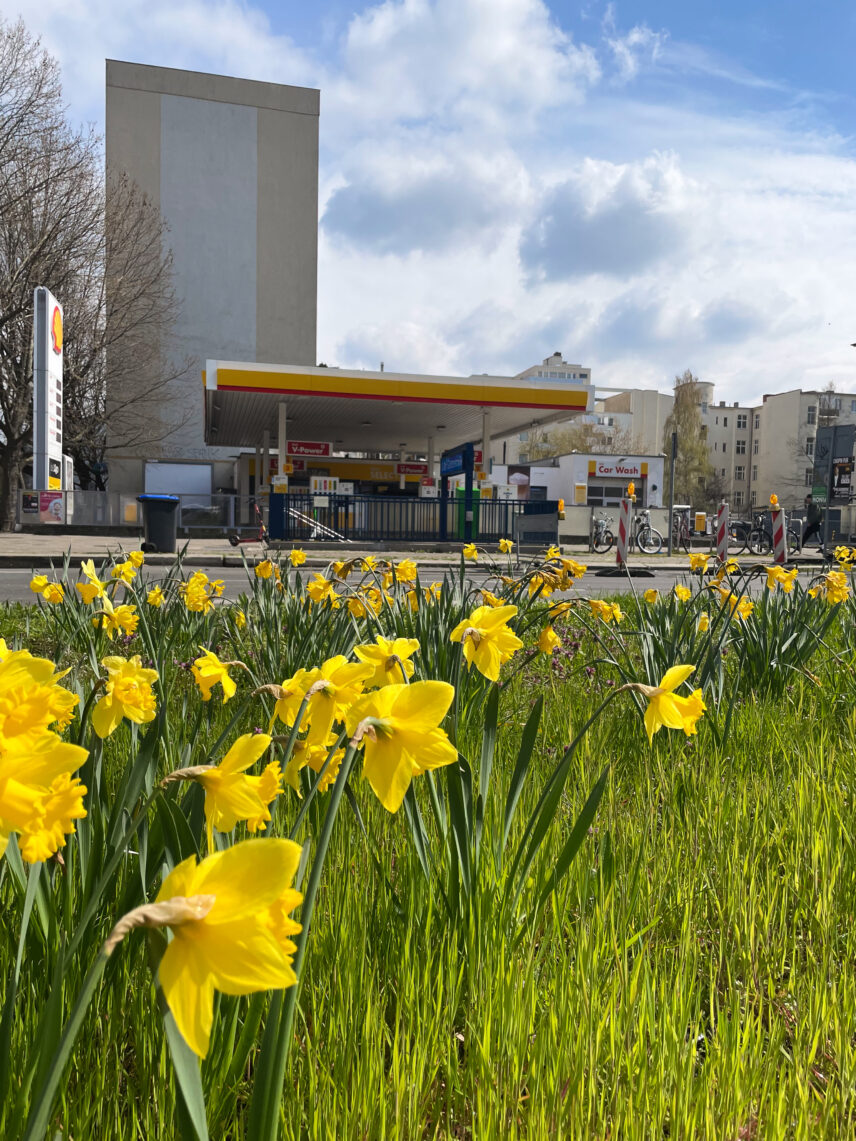
One way to grapple with these problems is to emphasize the empty space. As if the gas station were already abandoned, but not yet given over to weeds. As if “the human doesn’t really belong” as Franzi said to me in passing, looking at these pictures and liking the empty ones the best.
Gas stations can also convey the smallness of the human in relation to the vehicular landscape, cement, stone, cars, and trucks. The crowded mechanical life of a city, in which we barely figure. Hints of humans doing what they do with cars and gas. Driving them, for example, checking the oil, or filling them up.
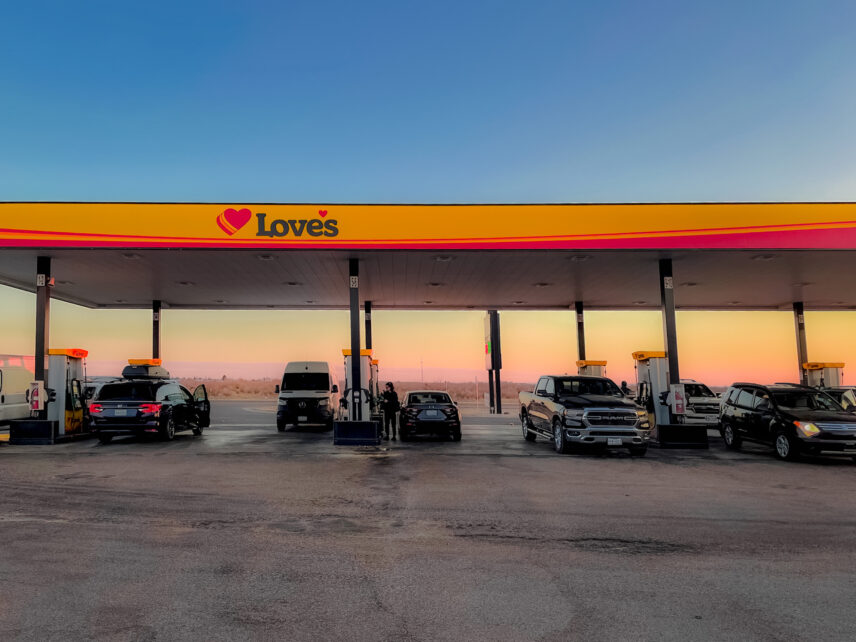
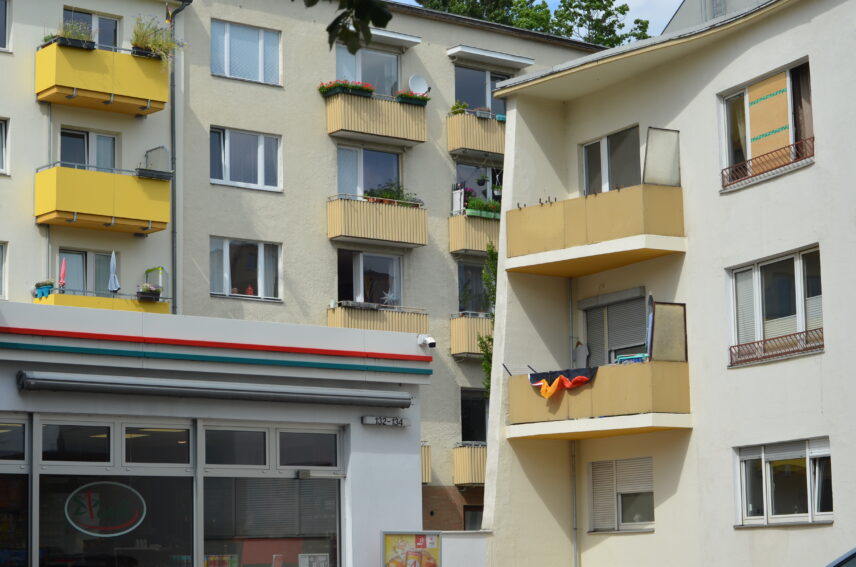
Life is not only a problem of human vitality; there is also the rest, what grows, what gnaws, and how a gas station is a part of the living world that surrounds it. Plants are one way… they frame the industrial beautifully.
Humans also live with gas stations. They are places in which we gather, so many so close to us that we occupy the same spaces and air. Alongside Kim Kardashian, who has an ongoing stream of images of herself at maximum sexy at gas stations, and William Eggleston, whose color photographs of gas stations in the 1960s captured a sense of their community and cultural surrounds, I too ask if gas stations might be the right way to frame a contemporary portraiture which is also a portraiture of the contemporary?
There are also hints of the change to come, the transitions already taking place. Gas stations powered with solar panels tell a story we often see of fossil-fueled infrastructures bearing a fossil-free future. Big rig trucks hauling tens of electric golf carts, oil platforms powered by wind or hydropower. In Germany it is common to see gas stations hosting solar arrays, electricity for the building understood to be a project separate from the provision of fuel for the vehicles that stop and fill. Of course, there is also the wonderous moment when a gas station is flanked by those machines that no longer need it. Obsolescence the frame of modernity.
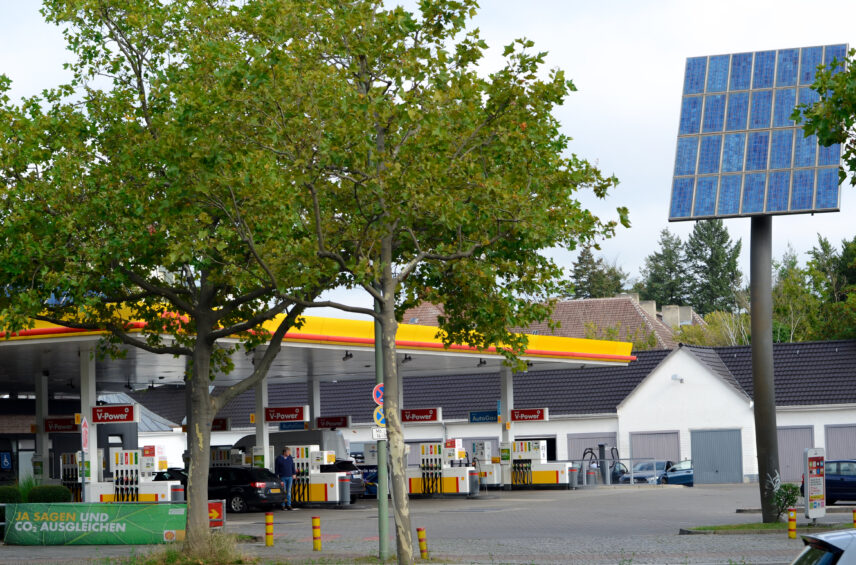
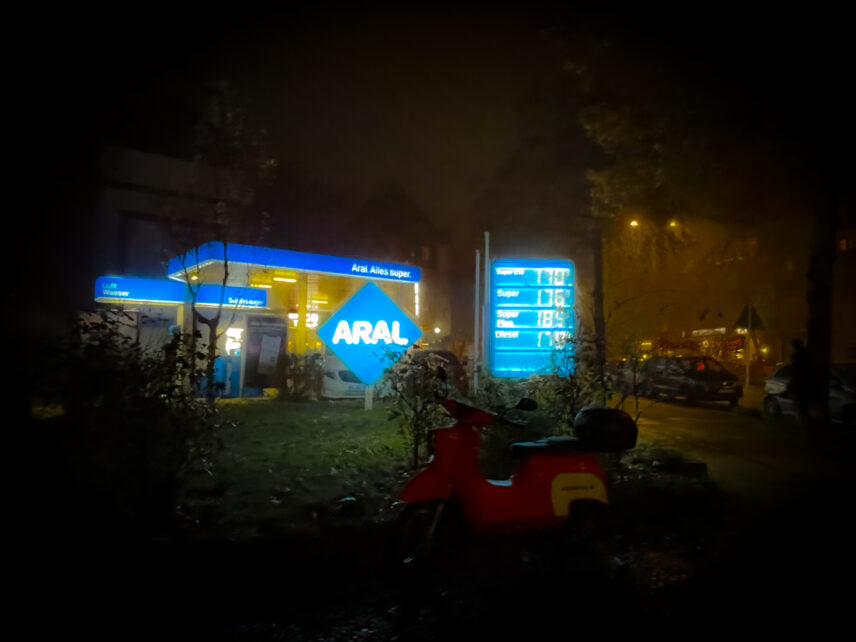
Author note: This work was generously supported by the Research Institute for Sustainability (RIFS), Potsdam, Germany, and the German Research Foundation (DFG).

